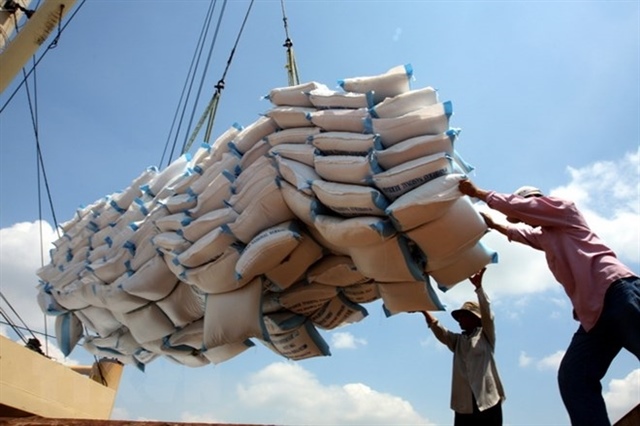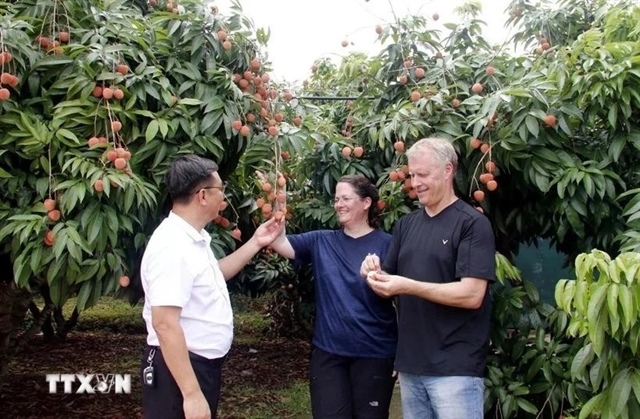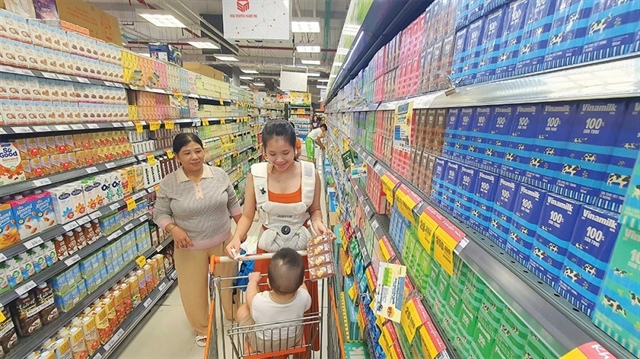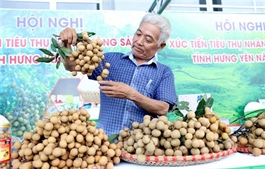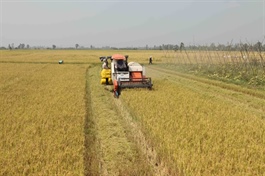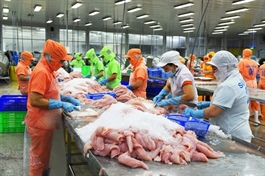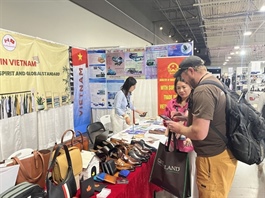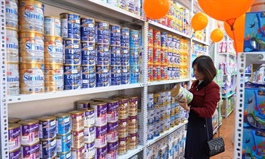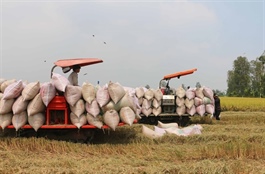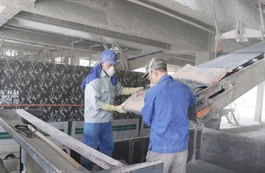Vietnam dairy market risks overheating amid surge of imports and brand proliferation
Vietnam dairy market risks overheating amid surge of imports and brand proliferation
The expansion of Vietnam's dairy market has created a paradox: while shelves are flooded with brands and imported powdered milk, the domestic dairy herd is shrinking, threatening the long-term resilience of the industry.
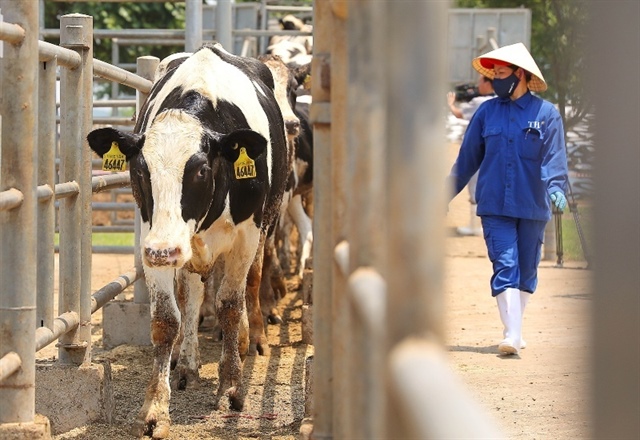
The Vietnam Livestock Association is calling for stronger policies to protect local dairy farmers. Photo: baodautu.vn |
On August 18, the Animal Husbanry Association of Vietnam (AHAV) sent an official document to the ministers of Industry and Trade, Agriculture and Environment and Health, suggesting a series of measures to strengthen domestic raw milk production and protect local dairy farmers.
According to the AHAV, unlike developed economies, livestock in Vietnam is not only about food security but also the livelihood of millions of farmers. This dual nature should be seen as a strategic advantage. The dairy development program,e from 2000 to 2020 already proves that Vietnam can build a competitive dairy industry based on local resources, combining large-scale corporate farms with household-scale dairy farming. This hybrid model produces strong growth, placing Vietnam among the fastest growing dairy producers in the region.
The market has become “too hot”, in the words of industry insiders, with a proliferation of brands and products, coupled with a surge in imported milk ingredients. This influx has overwhelmed local supply, making it difficult for consumers to distinguish product quality while simultaneously depressing the growth of domestic herds. Household dairy farmers, once the backbone of the sector, are under severe strain, with traditional dairy hubs like Ho Chi Minh City, Ba Vi, and Moc Chau seeing herd reductions and, in some cases, outright collapse. In Ho Chi Minh City alone, the dairy cow population has plunged by more than 50 per cent.
The association warns that unless policy is adjusted, Vietnam's dairy strategy will be impossible to achieve. It has laid out four policy priorities. First, Vietnam must leverage its domestic strengths, including fresh milk and agricultural by-products, while minimising imports of inputs that could be produced locally. Second, a national school milk initiative using only fresh milk should be launched, following successful examples from other countries. Such a scheme would improve child nutrition and create a stable demand driver for domestic dairy.
Third, technical standards must be revised to clearly differentiate fresh milk from reconstituted milk, ensuring consumers are informed and producers can compete fairly. Finally, all dairy producers should be required to source a minimum percentage of their inputs from domestic fresh milk. The association notes that this is common even in developing countries such as the Philippines, where a 1995 law obliges processors to buy at least 5 per cent of raw milk from local farmers, with tax incentives for exceeding this quota.
At a conference on August 5, association chairman Nguyen Xuan Duong revealed that local fresh milk currently covers only 38-40 per cent of national demand, with the rest reliant on imports, largely powdered milk for reconstitution. This undermines both nutritional quality and the viability of Vietnam's dairy value chain.
He warns that without strong policy intervention, the industry will not meet the target of 60 per cent self-sufficiency in fresh milk by 2030. Vietnam currently has only 3.3 dairy cows per 1,000 people, far below regional peers such as Thailand, Japan, and South Korea, and not aligned with its agricultural potential. Duong proposed a dual-track model combining high-tech corporate farming with professional household farms of 30-50 cows. This would optimise rural labor communities, utilise agriculture by-products, and distribute value more widely.
Data underscores the urgency. After rapid growth of 15.4 per cent annually between 2010 and 2015, the national herd growth slowed to 1.9 per cent annually from 2015 to 2020 and further collapsed to 0.4 per cent from 2020 to 2024. The sector is now at risk of missing the 2025 target of 500,000 dairy cows, with the herd standing at only 330,000, equivalent to 65 per cent of the plan.
Fresh milk production tells a similar story. Growth slowed from 17.7 per cent annually in 2010-2015 to 6.7 per cent in 2015-2020, and only 3.3 per cent between 2020 and 2024. Without corrective action, the 2030 goal of producing 2.6-2.8 million tonnes of fresh milk, ensuring 25-26 kilograms per capita and 60 per cent self-sufficiency, will remain out of reach.
For businesses, the implications are stark. Vietnam's dairy market is large and expanding, but relying on imported ingredients exposes it to volatile global supply chains while eroding local resilience. Domestic sourcing requirements, clearer labelling standards, and long-term school milk demand could stabilise the sector and create more sustainable growth pathways.
- 10:57 21/08/2025


